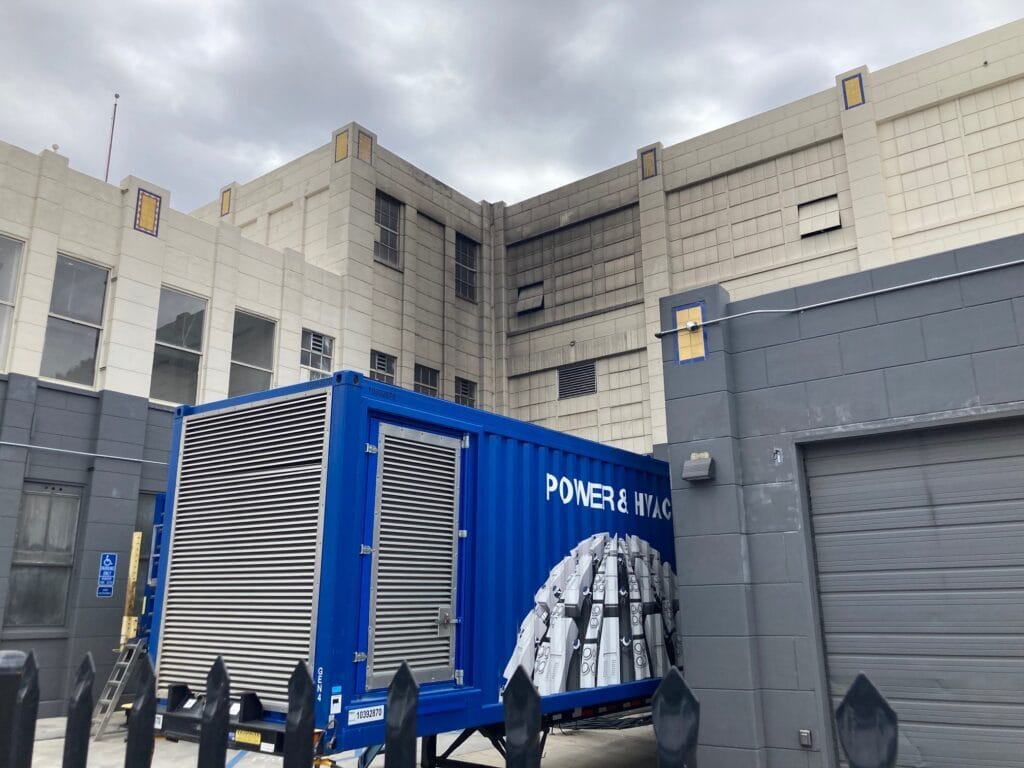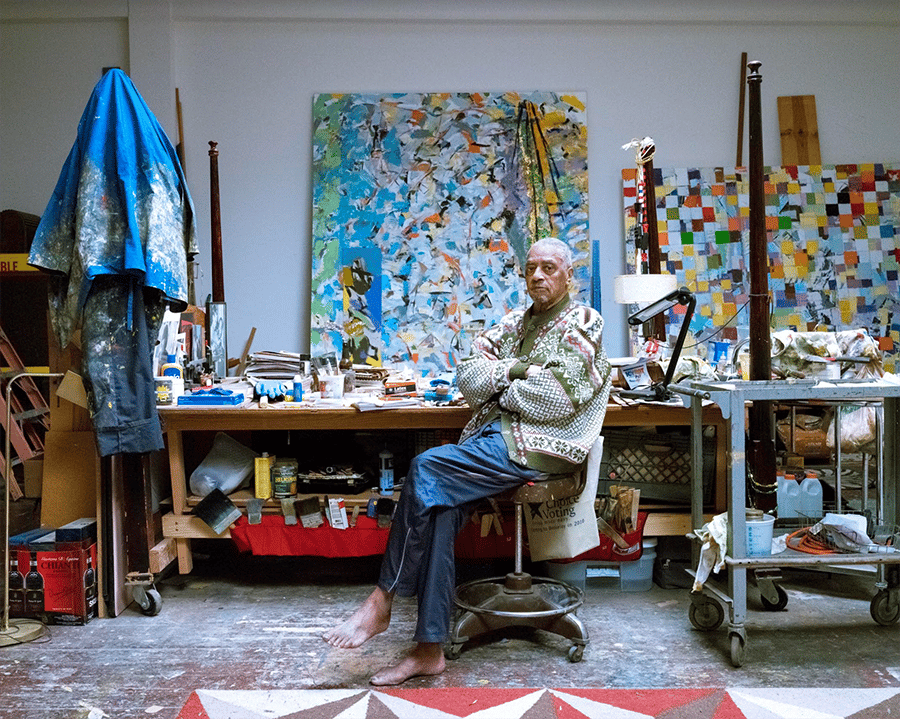A “dream team” of six organizations has been formed to help a group of residents living above a 100-thousand square foot grow operation in Oakland at The Cannery live-work warehouse. Will it be enough to save them from a toxic living situation? While there is plenty of goodness in this story, that goodness is part of a long battle between the potential of profits from cannabis and the continual battle for environmental justice. We wonder, is there a middle ground where both parties win out in the end?

View of The Oakland Cannery from San Leandro Blvd.
A little background on what happened in this saga so far:
I’ll try to summarize this best I can but we’ve come a long way with this story since we originally broke the news back in March of 2022. There have been some ups and downs since then, including big wins for artists in Oakland and those living in green zones.
This all started back in 2020 when Oakland’s Cannery, which at the time had 32 residents in 20 total studios, was purchased in a 54-million deal by a company called Green Sage. At the time, this was one of the largest real estate deals within the cannabis industry to date. The plan has always been to redevelop the property and profit (of course). As of 2023, there are only 11 residents with 9 live-work studios occupied and a long 3+ year battle over unsafe living conditions continues.

The massive industrial generator which were removed from a building next to The Cannery – Talso owned by the same landlords.
In some ways, it’s a tale as old as time. The new landlords tried every trick in the book to get the residents to move away from their investment. At one point, the power failed because the building’s electrical system couldn’t handle the number of cannabis companies operating out of the space.
Last year, we broke the story about toxic diesel generators being run 24-7 at the warehouse to power grow operations which the building’s wiring couldn’t support. The toxicity of the situation threatened the health and wellness of artists living inside The Cannery.KQED followed with an in-depth assessment of the situation written in multiple parts & SFGate also picked up the story (see links below). With the added press, eventually the city of Oakland listened and the state came in to shut down the generators. A federal court even sided with residents and the Environmental Democracy Project in stating clear violations of the Clean Air Act. The shady cannabis landlords ended up having to sell the warehouse and essentially default on their 54-million dollar loan. It was a huge wine for the residents still occupying The Cannery. Now, the property is owned by a new landlord: Rompsen.
There is little communication with their current landlord and there seems to be a bit of a standstill on that front. Meanwhile, there is plans to talk about updating the zoning in that neighborhood to better define where large grow operations can operate. And, luckily, Cannery residents have 6 businesses and organizations on their side to help try and find a solution.

Resident Alistair Monroe posing outside the red-brick Cannery building in East Oakland.
Is there enough people who care to offset those who don’t?The neighborhood that The Cannery is in already has some of the most toxic air quality in Oakland (Lockwood). The added pollution of grow operations within The Cannery and longterm exposure to those diesel generators has had an impact on residents. What’s tricky in this situation is that, while this area of Oakland is part of the city’s green zones (areas which allow cannabis companies), there are residents inside The Cannery. Back in March of 2018, there was a law passed by Oakland city officials which specifically protects residents living in green zones. You’d think that was pretty straight forward – if residents are in the building then no one can have a grow operation nearby. However, it’s not that simple. Multiple agencies have stepped in to help and the city is trying to pass new regulation which may help limit the scope of green spaces within Oakland. Specifically, for residents at The Cannery, these new regulations mean growing cannabis inside a live-work facility will be prohibited.
“The next steps will challenge cannabis zoning to stop all cannabis permits on both properties. The zoning states no cannabis permits within 300ft of residential homes. The online legend clearly shows that within certain zones, cannabis activity is not allowed within 300 feet of residential, schools etc…. However, we, as residents, are just not properly “zoned” as residents because it’s a live/work space,” said resident Alistair Monroe.
There’s an Oakland city council meeting which will discuss this issue coming up on May 23rd about this issue where the city is going to be considering updating the laws to prohibit cannabis cultivation approvals on Parcels with any residential use. If passed, residents might see some light at the end of a very very long tunnel – a battle which has been going on since 2020.
It may take some time for zoning laws to be updated to recognize the residents as such in The Cannery. The quickest resolution may be to purchase the space back from the new owners. There have been some organizations trying to step in to help purchase the space and bring back the vibrant art space that once was in the warehouse. However, these offers have been ignored since they fall below how much the ownership thinks the space is worth.

Seen here is Randolph Belle (on top of the art installation). He is part of Creative Development Partners who is helping Cannery residents
The Cannery story proves you can’t make anything happen alone:
In order to save artist housing, you can’t do it alone. While the residents are currently still battling to get cannabis businesses fully removed from their housing, there have been large strides in this fight for environmental justice.
Along the way, several organizations have banded together to create a “dream team” alongside the Cannery residents. The list of organizations helping The Cannery include environmental agencies, real estate developers and creative development partners. Each team believes in this cause and is working hard to find a resolution.
The Cannery’s Dream Team:
Oakland Impact Fund – Commercial Real Estate Developer
Creative Development Partners – Affordable Housing Group
CAST – Non-Profit Real Estate Developer
Designing Justice + Designing Spaces – Architecture and real estate development non-profit
Environmental Democracy Project
Center For Environmental Health (CEH)
“We wish for a peaceful resolution and that Rompsen (the current landlords) support the property sale at our affordable rate,” says Alistair Monroe, long time resident of the cannery. Romspen should take a loss from poor management and reckless ownership to support our win-win scenario!
Residents are also collaborating with the city to block all cannabis cultivation on the Oakland Cannery property parcel with unanimous votes from the Cannabis Regulatory Commission. For now, we can only wait to see if there is any change in this story on May 23rd during the Oakland City Council meeting. Note: we did reach out to a representative for The Cannery’s new landlords and didn’t hear back from them for a comment on this situation. We will update the story if we do hear anything from them.

Pictured here and in the thumbnail of this article is Arthur Monroe – known to be the first African American abstract expressionist painter and also the first resident of The Cannery.
The post 6 Organizations Step In To Save Artist Housing in Oakland appeared first on Broke-Ass Stuart's Website.










